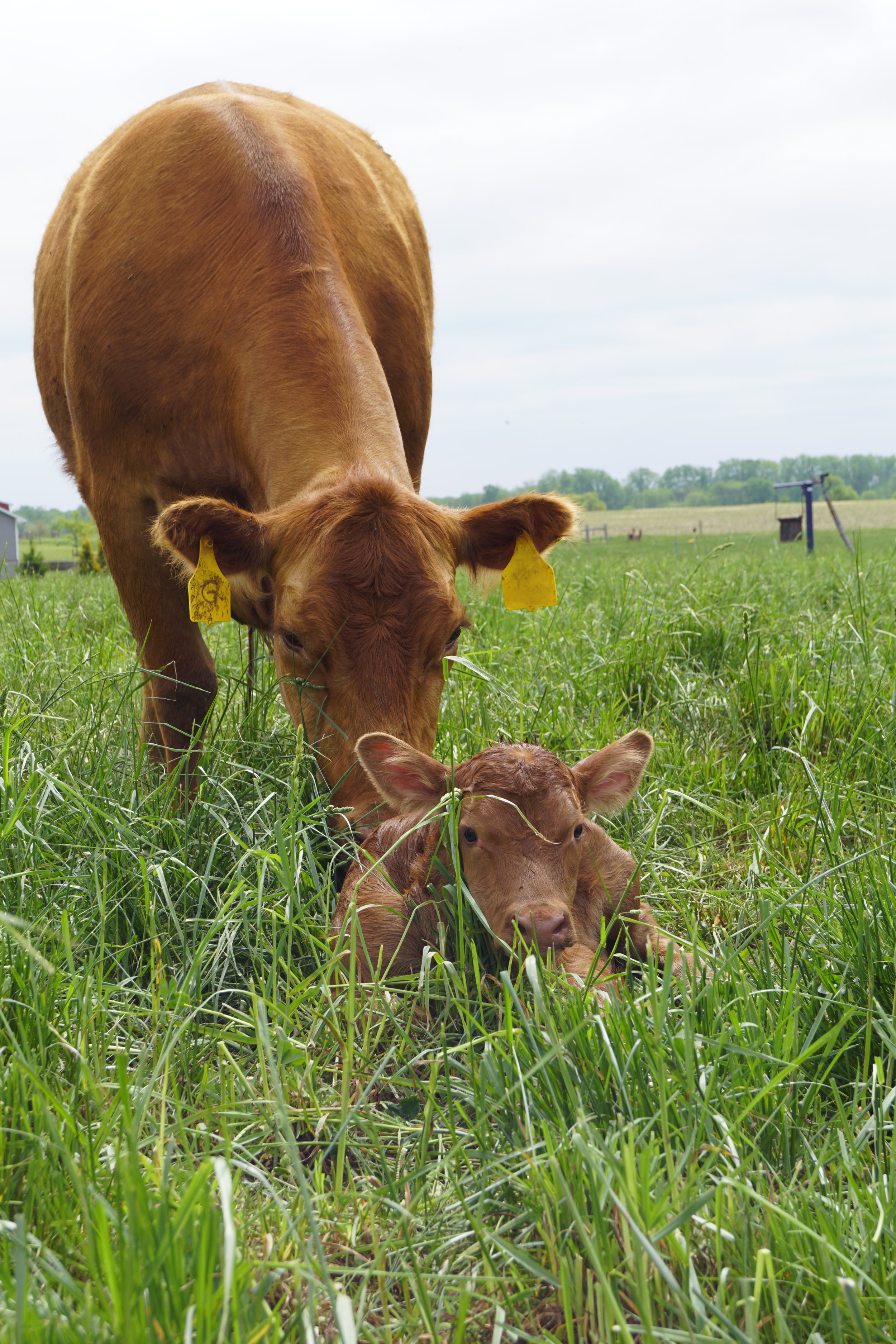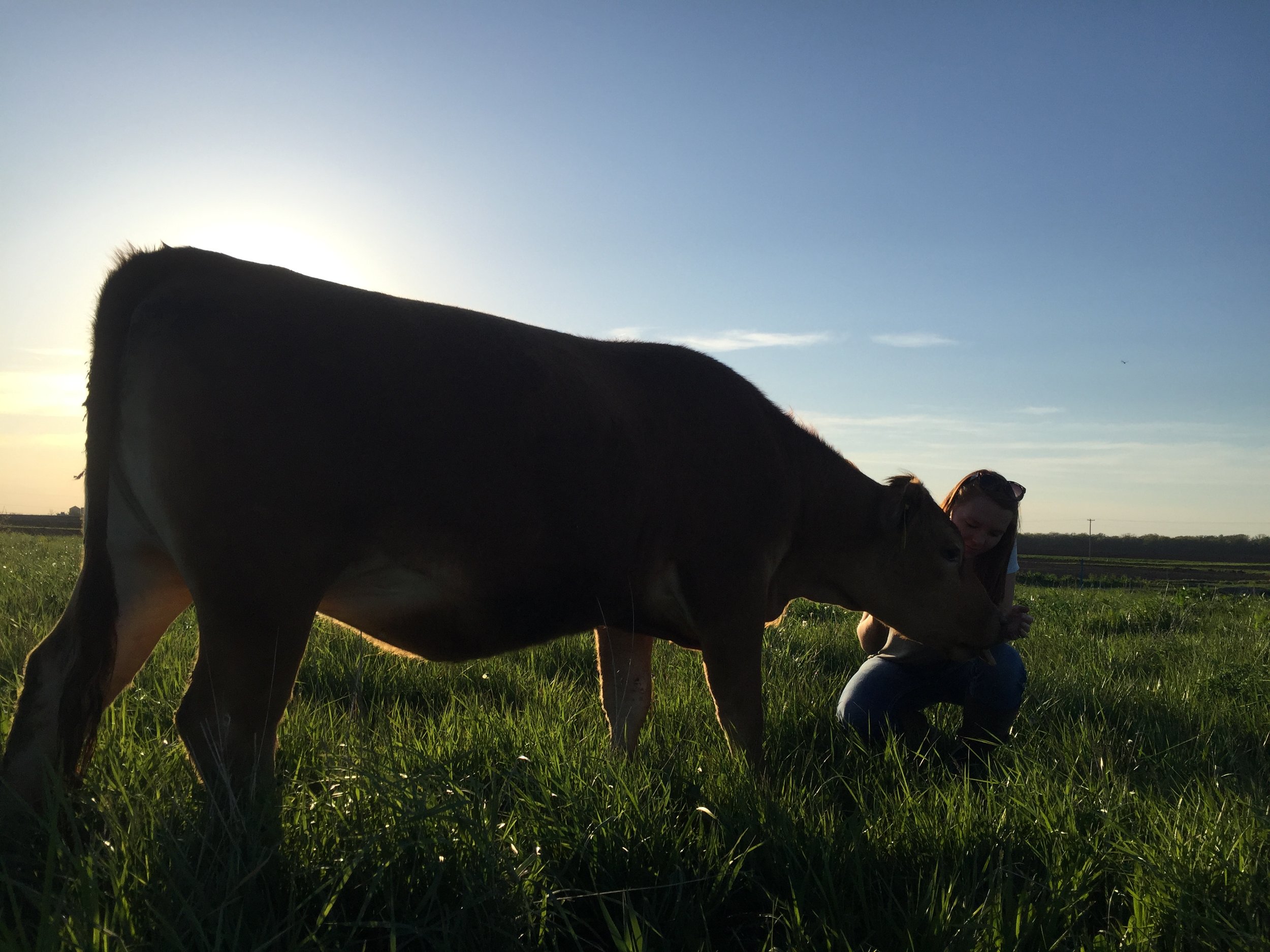I find the information on the chart above very interesting! When we look at the differences side-by-side, it quickly puts things in a whole new perspective.
A few weeks ago I discussed the multitude of confusing beef labels that you may encounter at the grocery store. If you would like to revisit that blog post, click here.
Okay, what is grass-finished or grass-fed beef? It simply means cattle who eat grass or stored forage for their entire lives. If you haven’t given much thought to what the animals you eat today were fed yesterday, you are not alone. Once you understand the vital differences between grass-fed and grain-fed, you’ll look at the meat you eat very differently.
Let’s look at few of the benefits of grass-fed (or as we like to call it, grass-finished) beef.
1. Grass-Fed Beef has fewer calories
EatWild.com founder Jo Robinson says,“Because meat from grass-fed animals is lower in fat than meat from grain-fed animals, it is also lower in calories. (Fat has 9 calories per gram, compared with only 4 calories for protein and carbohydrates. The greater the fat content, the greater the number of calories.) As an example, a 6-ounce steak from a grass-finished steer can have 100 fewer calories than a 6-ounce steak from a grain-fed steer. If you eat a typical amount of beef (66.5 pounds a year), switching to lean grassfed beef will save you 17,733 calories a year—without requiring any willpower or change in your eating habits. If everything else in your diet remains constant, you'll lose about six pounds a year. If all Americans switched to grassfed meat, our national epidemic of obesity might diminish.” [1]
2. Grass-Fed Beef helps fight cancer
Conjugated linoleic acid (CLA) is a powerful polyunsaturated fatty acid which has been shown to help fight cancer. One of the top sources of CLA is high-quality grass-fed beef and dairy products from healthy, grass-fed cows. In studies women who get a lot of CLA from their diets have a lower risk of colorectal cancer; they may also have a lower risk of breast cancer. [2]
A study at California State University’s College of Agriculture has shown grass-fed beef to have significantly more conjugated linoleic acid (CLA) than grain-fed beef. Interestingly, a 4 ounce serving of grass-fed beef has 433 mg of CLA while the same amount of conventionally raised beef has only 71 mg. [3]
Grass-fed meat is also high in precursors to cancer-fighting antioxidants like vitamin A and vitamin E .
3. Grass-Fed Beef contains more healthy fats
Omega-3 fatty acids are a type of polyunsaturated fatty acid that is especially beneficial to our health. A recent analysis from the Union of Concerned Scientists found that grass-fed steak has about twice as many omega-3s as a typical grain-fed steak. Another study published in Nutrition Journal backed up those numbers. [4]
4. Grass-Fed Beef is hormone and antibiotic free
This is true for most grass-fed beef producers, and here on our farm we guarantee our animals are NEVER given hormones or antibiotics.
Sadly, cattle in feedlots are routinely given hormones and antibiotics. Hormones are used too unnaturally increase weight and hence yield more meat. Since cattle in feedlots are confined to small spaces, this greatly increases the spread of disease which producers attempt to control by using antibiotics. The use of antibiotics in beef production can then contribute to antibiotic resistance in humans. [5]
5. Grass-Fed Beef is safer
Recent research conducted by Consumer Reports is the biggest study to date demonstrating that choosing grass-fed meat over conventional meat decreases your risk of food poisoning and results in fewer antibiotic-resistant bacteria.
The researchers analyzed the samples for the presence of five common types of bacteria found on beef in 300 samples of ground beef from 103 grocery, big-box and natural food stores in 26 cities across the country. One of the most significant findings of the research is that beef from conventionally raised cows was much more likely to have bacteria overall, as well as bacteria that are resistant to antibiotics, than beef from sustainably raised cows. [6]
Just like humans, cattle are what they eat. If cattle eat a diet that they are not meant to consume, they become unhealthy. Beef from 100% grass-fed cattle is not the same as beef from corn-fed cattle. These two products are drastically different.
What does all this mean? Whatever you put into your body becomes the building material for new cells and the energy to fuel this process. To make everything run smoothly, we should be striving to put only healthy foods into our body.
Here at Sonrise Farms we love producing healthy beef for families who are concerned about what they are eating. If you have a friend who would like to know more about the benefits of grass-fed beef, forward this article to them.
Thank you for reading,
Diane





